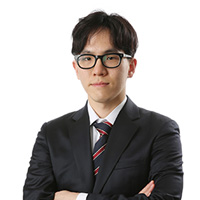S. Korea’s daily COVID-19 infections double on-week to over 70,000
Daily cases increase faster than government estimates
By Shim Woo-hyunPublished : July 19, 2022 - 09:36

South Korea‘s new coronavirus cases doubled again Monday from the previous week to surpass 70,000, amid a resurgence of infections fueled by the highly contagious new omicron strain BA.5.
In figures released by the Korea Disease Control and Prevention Agency on Tuesday morning, the country reported 73,582 additional cases.
That was more than double from a week earlier, when the country posted 37,360 cases. The figure is up more than fourfold from 18,147 cases two weeks ago.
It is also the first time that the country’s daily infections have surpassed the 70,000 mark since April 26, when the figure reached 76,787 cases.
The current speed of the spread has already outpaced what the government expected. Earlier, the government said the number of daily COVID-19 infections could come to some 40,000 by the end of July in the worst-case scenario.
With the daily tally already surpassing 70,000 already, it is expected the figure will also peak sooner than the government‘s earlier prediction. The government previously said the new COVID-19 wave would peak at approximately 200,000 daily cases in September.
The weekly COVID-19 data also shows the rapid surge in daily infections. During the second week of July, the country added a total of 230,058 COVID-19 cases, with a daily average of 32,865. The weekly figure was up 105.6 percent from a week ago.
Reflecting the current trend of the pandemic here, the government on Tuesday announced its changed prediction. Im Sook-young, an official from the KDCA, said during a daily COVID-19 briefing Tuesday that the new wave will peak in mid or end-August, with daily cases likely to reach between 200,000 and 280,000.
In the meantime, the recent increases in the number of daily COVID-19 cases are having a gradual effect on the number of critically ill patients and deaths from the virus.
During the second week of July, the daily average number of severe cases reached 71, up 47.9 percent from the previous week’s 48. The combined number of deaths during last week also jumped 67.7 percent to 104, from 62 a week ago.
On Monday, the country‘s critically ill patients went up further to 91, from the previous day‘s 81.
The number of deaths from the virus on the same day, however, remained relatively unchanged on Monday, reporting 12 deaths from the virus, up from the previous day’s 11. The death toll came to 24,765, as the fatality rate stood at 0.13 percent.
The government explained that BA.5 is driving the new wave and expected that the omicron strain will soon become the dominant strain in South Korea, if it is not already. The BA.5 detection rate among local COVID-19 patients marked 47.2 percent in the second week of July. If cases from international arrivals are included, the BA.5 detection rate is now at 52 percent, according to government data as of Tuesday.
To combat the summer spike fueled by the new omicron strain, the government on Monday began administration of another round of COVID-19 booster shots and recommended that adults over the age of 50 and the medically vulnerable consider booster shots.
The reservation rate for the government’s new booster shot program, however, is currently very low. As of 4 p.m. on Monday, the proportion of people who made reservations for COVID-19 vaccines -- among those in their 50s -- accounted for only 1.5 percent of the total population of the age group.
Meanwhile, the government has made clear that it is unlikely it would reinstate social distancing rules, instead focusing on treating patients in high-risk groups. An official from the country’s health authorities said the government would not reintroduce strict social distancing rules unless another COVID-19 variant with a high fatality rate is introduced in the country.




![[Herald Interview] 'Trump will use tariffs as first line of defense for American manufacturing'](http://res.heraldm.com/phpwas/restmb_idxmake.php?idx=644&simg=/content/image/2024/11/26/20241126050017_0.jpg&u=20241126161719)

![[Health and care] Getting cancer young: Why cancer isn’t just an older person’s battle](http://res.heraldm.com/phpwas/restmb_idxmake.php?idx=644&simg=/content/image/2024/11/26/20241126050043_0.jpg&u=20241126145342)


![[Graphic News] International marriages on rise in Korea](http://res.heraldm.com/phpwas/restmb_idxmake.php?idx=644&simg=/content/image/2024/11/25/20241125050091_0.gif&u=)








